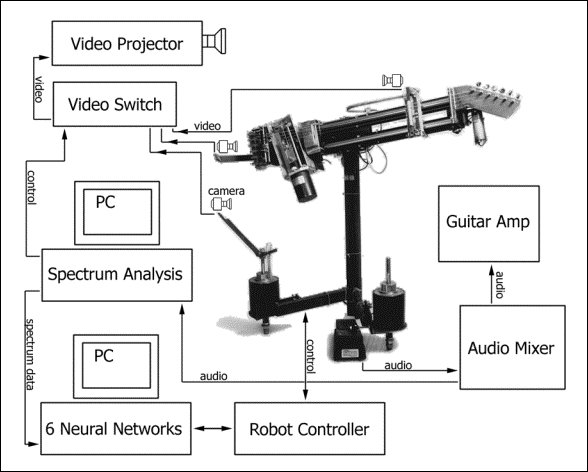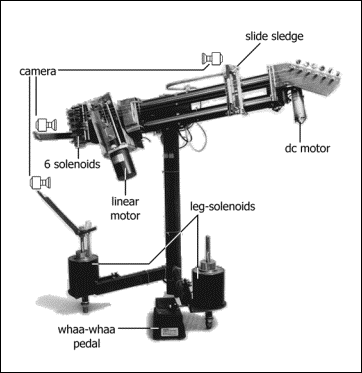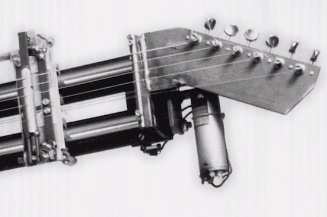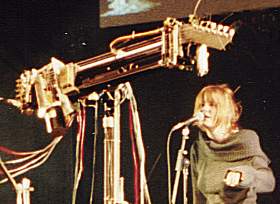Aglaopheme
As an example I will now describe one member of the band in more detail - Aglaopheme the slide guitar robot.
Play a very short sample
Load a small video (quicktime 236k)

The Body
Six solenoids are used to either dampen and release or to pluck the strings.
A short piece of cable tie serves as a very durable plectrum that is moved across the strings by a linear motor to pick selected strings. The entire plectrum-drive assembly can be pulled away from the strings by a solenoid to allow the plectrum to drive to the desired strings without hitting any others.
Two more video cameras are attached to the machine. One is located at the lower end of the guitar neck. The other one is mounted on top of a leg-solenoid.
Two big solenoids serve as legs to the robot. They can push up the entire framework in two different directions and thereby make the robot rock. This rocking motion also moves the whaa-whaa pedal up and down.

The Brains
When the robot first started playing in december 1992, the six neural network that control the machine's behaviour were randomly initialised. Today there are several different sets of networks available for different modes of operation (different speeds and tunings). All these sets are descendants of the primal neural nets from 1992. This means that the robot system now has the experience of about ten years of playing. Not constantly but regularly.
The network model used in this system is a variant of the so called Self Organizing Maps (SOM) originally introduced by Tuevo Kohonen [Ko]. A weak inhibitory mechanism was added to the network model in order to avoid excessive feedback.
The Circulation
The control loop is finally closed and the system can begin to learn by playing.



